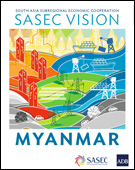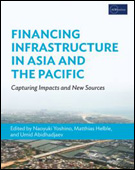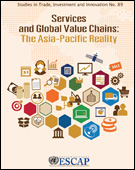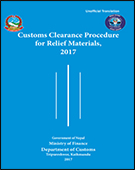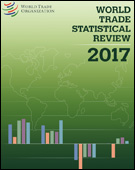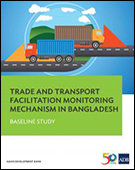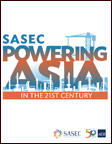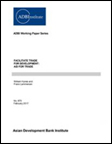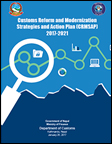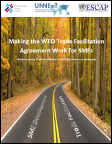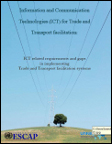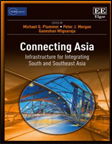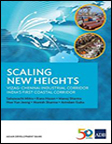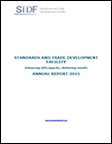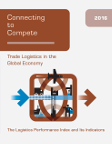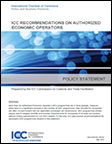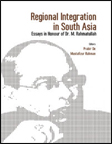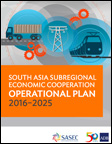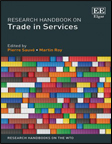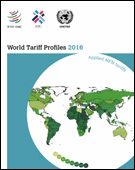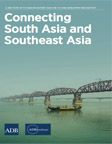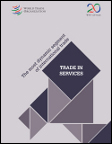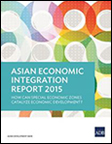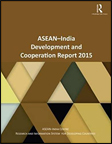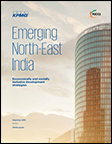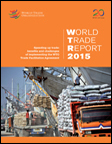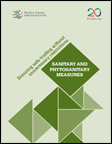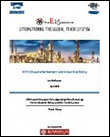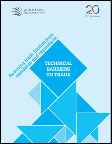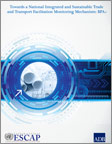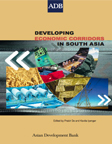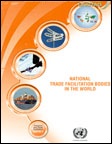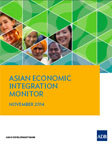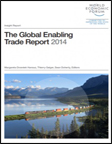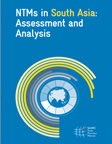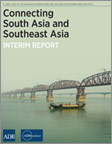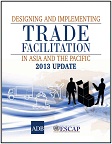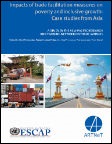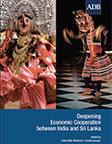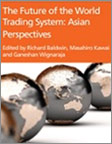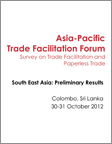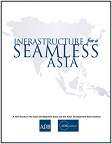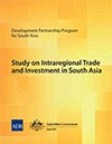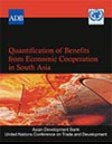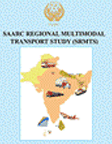Trade Facilitation Results
Trade facilitation focuses on removing barriers to the international movement of goods to lower trade costs, at and around the borders, and along the supply chain, to make countries more competitive in regional and global markets. In the SASEC subregion, bottlenecks in trade facilitation are the leading non-tariff barriers that constrain intraregional trade. SASEC initiatives in trade facilitation aims to make cross-border trade and transport in the subregion faster, cheaper, and more predictable, while maintaining the security of the supply chain and ensuring the effectiveness and efficiency of the institutions involved.
TRANSPORT REGIONAL & INTERNATIONAL
PUBLICATIONS
total items: 46Myanmar serves as a land bridge between South Asia, Southeast Asia, and East Asia. This book identifies regional and subregional opportunities for Myanmar to harness natural and human resources, industrial potential, and infrastructure connectivity as part of the South Asia Subregional Economic Cooperation (SASEC) program. SASEC Vision – Myanmar serves to supplement the 2017 SASEC Vision document, which articulates shared aspirations of the SASEC countries and sets the path to achieve these through regional collaboration.
This book looks at the impact of infrastructure investment on economic and social indicators, and shows how infrastructure investment can increase output, taxes, trade, and firm productivity. One study in the book shows that trade facilitation reforms in South Asia resulted in increased intraregional trade and trade with other regions. The book proposes innovative modes of financing for infrastructure needed to drive sustainable growth.
Source: Naoyuki Yoshino, Matthias Helble, and Umid Abidhadjaev (editors)
This book reviews issues concerning the roles of services in global value chains. It presents a framework for assessing links among different services and between services and the manufacturing sector. The book explains the contribution of services to global value chains in the Asia-Pacific region and to the world and also draws lessons with which countries could understand the importance of services and participation in global value chains to achieving sustainable development.
This relief consignment procedure published by the Nepal Department of Customs act as guide for the import of relief materials in response to emergencies and disaster situations in Nepal. It identifies items that can and cannot be imported, and conditions for import, and details procedures for Customs clearance, including declaration and valuation. It also discusses provisions for temporary import or export of relief goods.
The World Trade Statistical Review looks at the last 10 years and examines the latest developments in world trade, with a detailed analysis of the most recent trends for trade in goods and services. The book gives information on the participation of India, Bangladesh, and other South Asian economies in world trade, and highlights trends in the use of trade-facilitating measures. It also gives information on the implementation of the WTO Trade Facilitation Agreement and regional trade agreements, such as the South Asian Free Trade Arrangement.
Source: World Trade Organization
This report synthesizes the business process analysis conducted on the export of plastic kitchenware and tableware from Bangladesh to Bhutan through Burimari land port, and the import of lentils from Nepal to Bangladesh through Banglabandha land port, as well as studies on trade corridors and border crossings in Bangladesh, to quantify current trade and transport facilitation in Bangladesh through a set of indicators. Findings of the study reveal bottlenecks to trade, including costly one-time procedures for a new trader, numerous documents and copies required to complete export and import processes, and low speed along the trade corridors. This report includes specific short-term and long-term policies to improve Bangladesh’s trade and transport facilitation.
Source: Asian Development Bank
SASEC Powering Asia in the 21st Century defines the SASEC Vision, framing the SASEC partnership in the larger context of the subregion’s collective growth and development by articulating shared aspirations of the SASEC countries (Bangladesh, Bhutan, India, Maldives, Myanmar, Nepal, and Sri Lanka), and setting the path to achieve these through regional collaboration. The SASEC Vision lays out a subregional transformative opportunity by leveraging natural resources, promoting industry linkages for the development of regional value chains, and expanding the region’s trade and commerce through the development of subregional gateways and hubs. This document is supplemented by SASEC Vision – Myanmar.
The Aid for Trade program has been providing support to developing economies in tackling obstacles to growth through better facilitation of trade in the last 10 years. Since its launch in 2006, a total of $308 billion has been disbursed to finance aid-for-trade programs and projects, which are working to reduce trade and transport costs, promote trade expansion, and achieve economic and social objectives. As high trade costs persist in keeping developing countries from fully exploiting their trade and development potential, the Aid for Trade program remains highly relevant, and will help developing economies, including landlocked and small and vulnerable economies, achieve the 2030 Agenda for Sustainable Development.
The Customs Reform and Modernization Strategies and Action Plan 2017-2021 of the Nepal Department of Customs (DOC) aims to serve as a blueprint of Customs reform for the next four years, with a vision to support Nepal's initiatives toward economic and social prosperity. With Nepal seeing continuous increase of cross-border trade over the last decades, this Plan is being implemented to align Nepal toward international standards. It outlines the DOC's vision, mission, guiding principles, as well as strategies, such as expediting legitimate trade facilitation and enhancing Customs automation and data management, to create a conducive environment for seamless movement of cargo traffic to and from the borders, and help in lowering transaction costs through greater transport facilitation.
Source: Nepal Department of Customs
Small and Medium Enterprises (SMEs) comprise 95% of enterprises worldwide and provides at least two thirds of private sector employment. However, when it comes to international trade, SMEs experience limited capacity in dealing with the complex administrative and regulatory procedures associated with moving and selling goods across borders. This book fills a gap by providing a reference for articles of the World Trade Organization (WTO) Trade Facilitation Agreement (TFA) that are particularly beneficial to SMEs, and identifies examples of SME-specific programs, measures and interventions that can support the implementation of such provisions. It proposes mainstreaming relevant elements of the WTO TFA in existing SME policies and initiatives, to ensure that it contributes toward internationalization of SMEs.
Source: UNESCAP, UNNExT, and ITC
Information and Communication Technologies (ICT) provides efficiencies that can deliver many advantages for trade and transport facilitation (TTF) including Single Windows, automated business processes, digitalization of procedures, simpler interaction and transmission of data, and faster decision-making abilities. This paper looks at the business needs of TTF and explains the requirements of an architectural model to support TTF, with policy makers in mind. It highlights the need to integrate and modernize ICT systems and architecture so that ICT can respond to the needs of trade and transport facilitation.
Source: UNESCAP and UNNExT
This book contains background papers prepared for the Asian Development Bank and the Asian Development Bank Institute joint study, 'Connecting South Asia and Southeast Asia.' It emphasizes the potential contribution to growth that greater connectivity—through better transport and energy infrastructure and improved soft infrastructure, including trade facilitation—between South Asia and Southeast Asia can foster. With benefits including greater participation in global supply chains for South Asia; lower trade costs; and increase in inter- and intraregional trade, the book underscores that, at a juncture where closer regional integration can secure sustainable and inclusive growth for economies in the two regions, specific policies should be examined and considered to enable both regions to maximize gains from greater integration.
Source: Michael G. Plummer, Peter J. Morgan, Ganeshan Wignaraja, eds.
This book provides policymakers with a guide to understanding India’s economic corridor development strategy by examining its first coastal economic corridor, the East Coast Economic Corridor. It lays out the plan for its first phase, the Vizag–Chennai Industrial Corridor, which can help unify the country's domestic market, integrate its economy with Asia's global value chains, and support the 'Make in India' initiative to spur manufacturing through construction of world-class infrastructure supported by a major transport network, connecting urban clusters complemented by vibrant industrial zones, and encouraging a favorable and competitive environment for businesses to thrive, and facilitating efficient movement of goods and people. As a policy instrument and development strategy, economic corridors can help fast-track inclusive and sustainable economic growth, stimulate rapid industrialization and increase productivity, promote investments, and expand regional connectivity.
Source: Sabyasachi Mitra, Rana Hasan, Manoj Sharma, Hoe Yun Jeong, Manish Sharma, and Arindam Guha
In 2015, Standards and Trade Development Facility (STDF) worked to help developing countries gain market access through effective implementation of sanitary and phytosanitary (SPS) measures. This report not only gives an update on STDF’s SPS capacity-building efforts, it also compiles valuable knowledge on good practices on those efforts. In addition, the report talks about lessons STDF has learned from its partnerships, leveraging external funding, and the conduct of its projects.
Connecting to Compete scores and benchmarks countries’ performance on logistics, which is determined by various factors including infrastructure, regulations, policies, geography, and political economy. In the 2016 Logistics Performance Index (LPI), which measures the efficiency of international supply chains, the “logistics gap” between more and less developed countries remain evident. Among SASEC member countries, India is a top performing lower-middle-income economy, improving its rank from 54 in 2014 to 35 in 2016. Bangladesh is ranked 87, Maldives is ranked 104, Nepal is ranked 124, and Bhutan is ranked 135. The publication remarks that coastal countries score better than landlocked countries—a pattern clearly evident in South Asia—and notes that lack of integration in the region keeps the good logistics performance of India from improving the rankings of its neighbors. For countries at the bottom of the rankings, border management reforms continue to be a serious concern, as paperwork and long delays constrain trade efficiency.
The World Customs Organization (WCO) developed the WCO Framework of Standards to Secure and Facilitate Global Trade (SAFE), of which the Authorized Economic Operator (AEO) program is an integral part, referring to manufacturers, importers, exporters, brokers, carriers, consolidators, intermediaries, ports, airports, terminal operators, integrated operators, warehouses, distributors, and others that have been approved by or on behalf of a national Customs administration as complying with WCO or equivalent supply chain security standards. AEO accreditation provides several benefits, including immediate release procedures self-assessment, and relief from guarantee/bond requirements. With AEO programs globally on the rise, the International Chamber of Commerce has put together several recommendations for successful AEO programs that lead to tangible benefits and process improvements for companies of all sizes and sectors, without limiting opportunities for non-AEO traders.
Building efficient transport linkages within and across countries in South Asia is crucial to development of production networks and value chains, and promotion of trade and investment. This collection of essays honors Dr. M. Rahmatullah, who championed the cause of multimodal connectivity in South Asia for seamless movement of goods across Asia, and dreamt of building an integrated South Asia through corridors and gateways to be connected with pan-Asian transport networks. A valuable resource for policymakers, academics, and practitioners working on issues of South Asian regional integration, this book looks at progress made on facilitating trade and enhancing connectivity in the region, assesses policy priorities, implementation imperatives, and emerging challenges to South Asian trade and integration, and gives recommendations on further strengthening South Asian integration.
Source: Prabir De and Mustafizur Rahmant
The SASEC Operational Plan 2016–2025 embodies the strategic objectives and operational priorities of the SASEC Program for the next decade. It expands the SASEC Program's focus beyond intraregional cooperation to developing links with Southeast and East Asia, thus widening the scope of transport, trade facilitation, and energy cooperation. Economic and industrial corridor development, which will arise from improved connectivity, has been introduced as a priority initiative. SASEC 2025 is supported by a list of potential projects to be implemented in the subregion during 2016-2025, that will advance the SASEC goals of multi-modal connectivity, energy security and the growth of regional energy markets, and increased intra- and inter-regional trade. An update to the operational plan was published in 2020.
Source: Asian Development Bank
This Research Handbook explores the latest developments in services trade by drawing on insights from experts with a range of perspectives, including empirical economics, law and global political economy. The book further chronicles the rising stakes and involvement of developing countries in global services trade, notably their growing insertion in global value chains, as well as the latest advances and remaining challenges in the statistical measurement of trade in services.
World Tariff Profiles, a joint publication of the World Trade Organization (WTO), International Trade Centre, and the United Nations Conference on Trade and Development, provides comprehensive information on tariff parameters imposed by the 164 WTO members—including Bangladesh, India, Maldives, Myanmar, Nepal, and Sri Lanka— and other countries and Customs territories with available data on imports—including Bhutan, a WTO Observer. It contains individual country tariff profiles, and statistics on non-tariff measures in effect as of December 2015. This 2016 edition also contains a discussion of the 2017 Harmonized System, which will affect around 15% of goods traded globally.
This book analyzes how closer regional connectivity and economic integration between South Asia and Southeast Asia can benefit both subregions. It aims to build a broad case for increased connectivity between the two regions and identify specific projects that have high potential to fulfill this objective. This joint study focuses on both “hard” infrastructure and associated “soft” infrastructure, including tariffs and non-tariff barriers, trade and transport facilitation, energy trading, and infrastructure investment and financing. It further provides a canvas for considering strategic cross-border infrastructure investments and policy reforms.
Source: Asian Development Bank Institute and Asian Development Bank
The World Trade Organization (WTO) marks its 20th anniversary with a series of brochures to assist understanding of specific WTO agreements. This publication focuses on the WTO General Agreement on Trade in Services (GATS), which provides the legal ground rules for international trade in services, allowing WTO members the flexibility to open their markets to foreign competition to the extent of their choosing. GATS entered into force in 1995 and remains the only set of multilateral rules covering international trade in services. This brochures provides an overview of the different modes by which services are traded, commitments taken by WTO members, and developments enhancing GATS commitments and information on trade in services.
Source: World Trade Organization
The 2015 Asian Economic Integration Report reviews regional economic cooperation and integration in Asia, providing updates on recent developments affecting trade policy, including the conclusion of Trans-Pacific Partnership, relatively large number of proposed FTAs--with India among the major proponents, and progress of trade facilitation in Asia through the World Trade Organization's Trade Facilitation Agreement. Trade facilitation in developing Asia has significantly advanced over the last several decades, with a total of 48,000 kilometers of regional transport corridors along major supply chains improved. From 1992 to 2014, developing Asia together with ADB and its partners have mobilized $38.4 billion for 186 regional transport and trade facilitation investment projects under three subregional programs—including the South Asia Subregional Economic Cooperation (SASEC) program. This also issue includes a special chapter highlighting how special economic zones can catalyze economic development, with the right business environment and policies in place.
Source: Asian Development Bank
Re-engagement between India and ASEAN through increased cooperation across a range of issues, including trade and connectivity, is set to boost prosperity, competitiveness, growth and integration. With negotiations underway to establish a comprehensive free trade area through the Regional Comprehensive Economic Partnership, economic integration between India and Southeast and East Asia is set to scale new heights – further highlighting need for economic corridors with adequate cross-border infrastructure facilities that could facilitate increased production and services networks between ASEAN and Indian economies. This Report brings together experts and researchers who weigh in on ASEAN-India relations, analyzing the impact and implications of integration; assessing policy priorities, effectiveness, implementation imperatives and challenges; and discussing themes central to the economic sustainability of the region.
Source: ASEAN–India Centre, Research and Information System for Developing Countries
This report highlights opportunities that can be explored in India's North East region, including tourism, energy, and infrastructure, to enable the North East to develop economically, while contributing to India's development as a whole. It takes stock of recent initiatives, including the 'Look East' Policy and the Bangladesh-Bhutan-India-Nepal (BBIN) subregional grouping, and identifies areas for improvement to propel inclusive growth. Harnessing the region's full potential would require upgrading the region's infrastructure. Significant investments are needed, since lack of connectivity and inadequate infrastructure present developmental bottlenecks, contributing to the slow pace of growth in the North East. The report presents policy recommendations and suggested actions, and a forecast for India for 2021-2022.
Source: KPMG India and FICCI
The World Trade Report 2015 is the first major study to comprehensively examine the benefits and challenges of implementing the World Trade Organization's Trade Facilitation Agreement (TFA) since its adoption in 2014. It discusses the importance of implementation of the TFA, its economic impact, and the steps being taken by the WTO to enable countries to maximize its benefits. This report presents further evidence that speedy and extensive implementation of the TFA will lead to bigger gains, particularly for developing countries and least developed countries.
Source: World Trade Organization
The World Trade Organization (WTO) marks its 20th anniversary with a series of brochures. This publication focuses on the WTO Sanitary and Phytosanitary (SPS) Measures Agreement, which aims to balance the right of WTO members to protect health through adoption of legitimate measures to protect food safety, and animal and plant health, while enabling the smooth flow of goods across international borders. It includes briefs on SPS training activities and the SPS Committee, as well as a case study.
Source: World Trade Organization
This paper explores the World Trade Organization's (WTO) dispute settlement mechanism in relation to the space it provides for Member countries’ industrial policies. It provides general conceptual reflections covering the role of WTO panels and the Appellate Body and the nature and categorization of WTO legal provisions applicable to trade in goods; and discusses how dispute settlement in WTO can affect or expand the policy space available to WTO Members in adopting industrial policy measures. This paper presents several examples that demonstrate the potential impact of WTO adjudicatory bodies on the policy space of WTO Members to implement and pursue industrial policy measures.
Source: Jan Bohanes
The World Trade Organization (WTO) marks its 20th anniversary with a series of brochures to assist understanding of specific WTO agreements. This publication provides an overview of the WTO Agreement on Technical Barriers to Trade (TBT), which aims to ensure that technical regulations, standards, and conformity assessment procedures are non-discriminatory and do not create unnecessary obstacles to trade. It reviews how the TBT Committee, a unique multilateral forum for the discussion of standards and regulations affecting trade comprising WTO members, have created a predictable trading environment by enacting transparency provisions, and facilitated trade by encouraging WTO members to base their measures on international standards.
Source: World Trade Organization
This ADB-UNESCAP publication aims to provide guidance to the countries of the Asia-Pacific region on establishing a sustainable trade and transport facilitation monitoring mechanism (TTFMM). Underpinning the TTFMM is the integrated methodology of Business Process Analysis Plus (BPA+), which is built on the Business Process Analysis methodology, and supplemented by Time Release Studies (TRS) and Time-Cost-Distance (TCD) methodologies. It is envisaged that establishment of TTFMM will enable effective monitoring and enhancement of national trade facilitation on a continuous basis and in a sustainable manner.
Source: UNESCAP
This book describes key conditions for transforming transport corridors into economic corridors and establishes the rationale for developing economic corridors, and the related benefits from production value chains along those corridors. It further emphasizes the significant potential of economic corridors in South Asia, particularly those being developed under the South Asia Subregional Economic Cooperation Program. The chapters highlight the impact of trade barriers on bilateral trade and present case studies on trade facilitation in South Asia. Countries in the subregion would benefit by working closely to exploit the full economic potential of economic corridors.
Source: Asian Development Bank
This UNCTAD publication provides the first, in-depth quantitative analysis of 50 existing national trade facilitation bodies and a first-hand set of recommendations from experiences of participating stakeholders. It offers policy-oriented conclusions to assist countries about to set up or strengthen their national trade facilitation working groups. The study reveals that the biggest challenge for trade facilitation working groups is sustainability. Its determining elements include the administrative culture of each country, level of development, or type of body and geographical region.
This AEIM review of recent economic performance highlights the need for Asia to rebalance its sources of growth toward domestic and regional demand. It also shows a resilient Asia with rising GDP growth in South Asia. This issue includes a Special Chapter: Regional Financial Integration and Crisis in Asia and Europe – A Comparative Analysis. It presents Asia’s future path of integration as different from that in Europe. Asia will continue to strengthen efforts to harmonize rules and regulations in the financial sector and further unilateral trade and investment, while Europe is more likely to strengthen regional institutions to ensure recovery and better the monetary union.
Source: Asian Development Bank
The Global Enabling Trade Report offers a tool to monitor progress on implementing measures for the Trade Facilitation Agreement. Benchmarking the performance of 138 economies in four critical areas, including border administration, the Report takes off from the success of the Bali package by emphasizing measures that facilitate trade at a more practical level, with benefits that significantly outweigh the cost of necessary reforms and produces positive spillover effects on other indicators—market access, infrastructure, and operating environments. Also mentioned are insights on further boosting trade facilitation within the region, such as regional cooperation and sharing of good practices. The Report is intended as a motivator for change at a time of renewed momentum for trade facilitation where windows of opportunities for policymakers to push through trade-enabling measures are open.
Source: Margareta Drzeniek Hanouz, Thierry Geiger, Sean Doherty (eds.)
The study “NTMs in South Asia: Assessment and Analysis” analyzes how Non-tariff Measures (NTMs) give rise to non-tariff barriers, which are becoming increasingly crucial for advancing trade cooperation among member countries of the South Asian Association for Regional Cooperation, yet remain less-addressed. The study examines export potential and actual export of South Asian countries, and attempts to highlight gains from reduction in transaction costs in bilateral trade. It also notes that initiatives for trade facilitation reforms in South Asia at the regional level remain low in incentives and have yet to produce significant results. The study closes with several recommendations for reducing and eliminating NTMs.
Source: Selim Raihan, Mostafa Abid Khan, and Shaquib Quoreshi
This joint ADB-ADBI study focuses on how improved physical connectivity (infrastructure) and associated institutional connectivity (software) can enhance more effective economic integration between the two subregions. The report reviews economic ties, identifies issues and constraints, and explores better connectivity and closer economic integration. It also examines major developments in South Asia-Southeast Asia trade and investment, economic cooperation, role of economic corridors, and regional cooperation initiatives.
Source: ADB and ADBI
This reference book was published to support the implementation of trade facilitation measures and reforms in Asia and the Pacific. It includes operational guidance on assessing the status of trade facilitation, the measures and reforms needed, how to design trade facilitation initiatives, and how to implement them at national and regional levels. The book is intended to assist policy makers, practitioners, and economists by bridging the gap between theory and practice. The revised 2013 version includes updated statistical figures and data, information on actual trade facilitation policies and practices, and the most recent research on trade facilitation.
Source: Asian Development Bank / United Nations Economic and Social Commission for Asia and the Pacific
This book addresses the gap between trade facilitation and poverty reduction and contains a compilation of specific case studies that explores the linkages between trade facilitation measures and poverty. It also presents cross-country analysis that examines inequality in low- and middle-income countries. Other chapters discuss economic corridors and microfinance development as trade facilitation measures and examine access to trade facilitation by export-oriented micro, small, and medium-sized enterprises. It also explores barriers to international entrepreneurship for the vegetable business in Bangladesh. Finally, it offers a comprehensive evaluation of the effectiveness of Export Processing Zones (EPZs) on poverty reduction.
Source: Ravi Ratnayake, Rajan Sudesh Ratna, Martina Francesca Ferracane and Yann Duval
This book analyzes the performance and impact of the India-Sri Lanka free trade agreement over the past decade and suggests the way forward. India became an important source of imports for Sri Lanka immediately after the implementation of the free trade agreement.
Source: Asian Development Bank
According to WTO Director-General Pascal Lamy, the problems facing Asian regionalism are a scaled-down version of the problems facing the world. Thus, solutions that address Asia’s noodle bowl would most likely work at the global level. This concise collection of short chapters is based on longer papers presented at the Geneva Conference on 11-12 March 2013, organized by the Asian Development Bank Institute and Centre for Trade and Economic Integration at the Graduate Institute of International and Development Studies, in collaboration with WTO. The chapters are written by leading Asian and international trade experts on key changes taking place in the world trading system and its policy implications for Asia.
Source: Richard E. Baldwin, Masahiro Kawai, and Ganeshan Wignaraja, eds.
Conducted jointly by the Asian Development Bank and the United Nations Economic and Social Commission for Asia and the Pacific, this survey provides a status snapshot of trade facilitation in place across 26 countries of the region, including progress towards establishment of national trade facilitation committees, implementation of risk management measures, development of national single windows, and steps taken to move toward paperless trade. It further examines specific issues and challenges in these areas of South East Asian countries, and provides recommendations for improvement.
Source: ADB and UNESCAP
The study reviews regional infrastructure being enhanced through regional cooperation in Asia and examines major issues and challenges. It suggests a framework for pan-Asian infrastructure cooperation, anchored on a long-term vision of creating a seamless Asia that will not only enhance the region's competitiveness and extend its global reach, but also help reduce poverty and promote greater environmental sustainability.
Source: Asian Development Bank / Asian Development Bank Institute
In today's globalized world where the economic fates of nations are inevitably linked, weathering the present economic storm for Asia will increasingly depend on harnessing regional dynamics particularly on the trade front. Pan-Asian Integration: Linking East and South Asia is a rich volume of perspectives from leading thematic experts on regional patterns of trade and investment, trade-related infrastructure, trade facilitation, among others.
Source: Asian Development Bank
This study broadens and deepens intraregional cooperation and integration in trade and investment among South Asian countries. It showcases the benefits of regional integration and presents an array of policy recommendations to maximize and realize such gains. Three parallel initiatives are needed: first, reduce nontariff barriers to deepen the South Asian Free Trade Area (SAFTA); second, expand SAFTA's scope to include investments and services; and third, focus on key industries to succinctly demonstrate the process and benefits of reforms. These translate into six component studies: (i) the Role of Trade Facilitation in South Asian Economic Integration; (ii) Country Investment Studies for Bangladesh, India, Nepal, and Sri Lanka; and (iii) Textile and Clothing Industry. The study invigorates the debate and focus on South Asian integration as a means to further growth and reduce poverty.
The study examines the implication of the South Asian Free Trade Agreement (SAFTA) on South Asian countries and on the region as a whole, employing both a quantitative and qualitative assessment on the outcomes of SAFTA. The research aims to provide support in the formulation of concrete policy measures for trade to ensure greater gains for the region, while at the same time mitigating potential negative impacts. Economic and social assessments through analytical tools and rational causal chain analysis further enrich the study.
Source: Asian Development Bank / United Nations Conference on Trade and Development
SAARC Regional Multimodal Transport Study - SRMTS
Source: SAARC Secretariat

